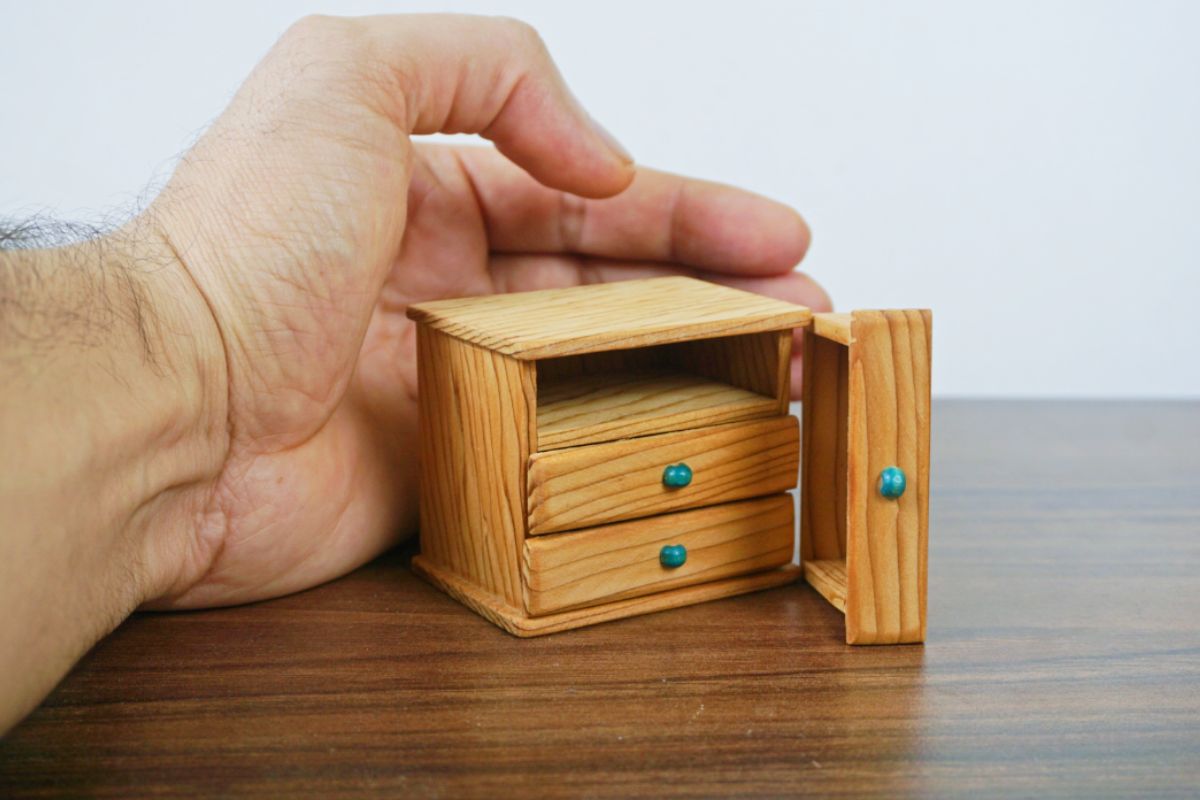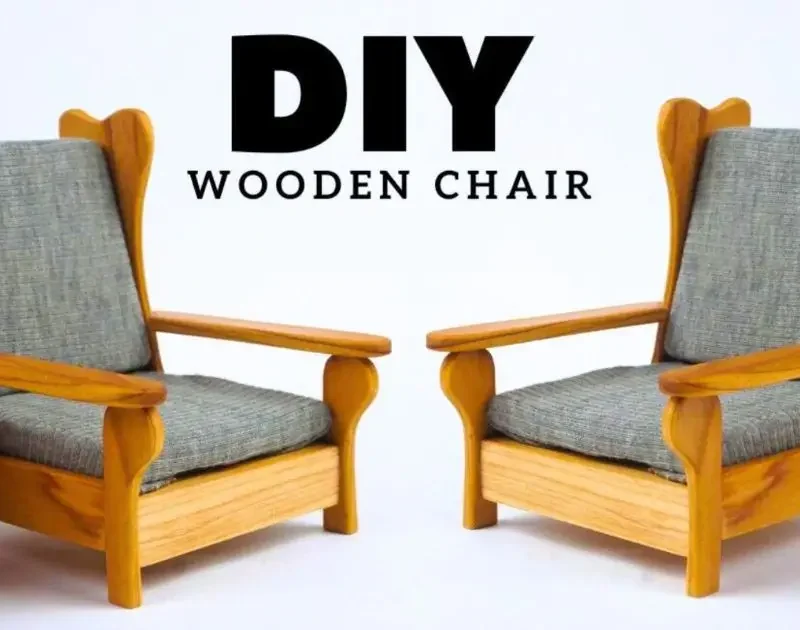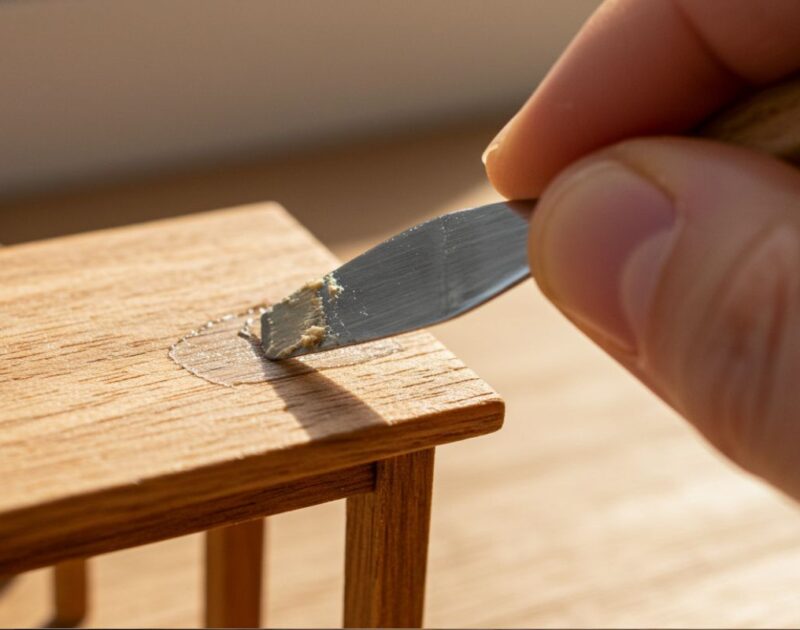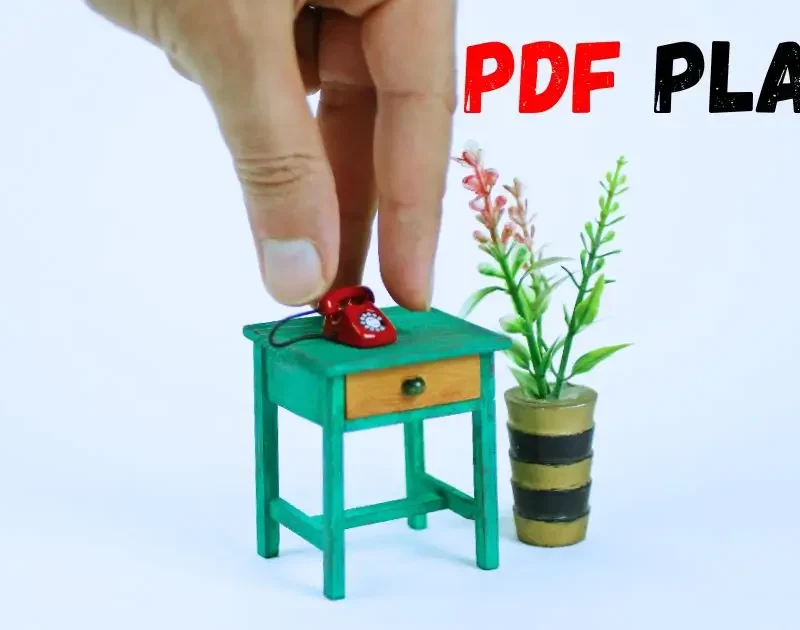When I share my miniature furniture creations online, one question appears more frequently than any other: “What type of wood do you use?” The answer is simple yet significant—cedar wood. This remarkable material has become the cornerstone of my miniature crafting journey, and today, I’m excited to share why cedar wood is my go-to choice for creating intricate, dollhouse-scale furniture pieces.
Why Cedar Wood for Miniature Furniture?
Cedar wood stands out as an exceptional material for miniature furniture making, and my choice isn’t arbitrary. This aromatic softwood offers a unique combination of characteristics that make it ideal for detailed, small-scale woodworking projects.
The first thing you’ll notice about cedar wood is its distinctive, pleasant aroma—a natural benefit that comes from the wood’s inherent oils. But beyond its scent, cedar wood possesses qualities that miniature makers dream about. Its fine, straight grain makes it incredibly easy to work with, allowing for precise cuts and smooth finishes essential when working at 1:12 or 1:24 scale.
The Characteristics That Make Cedar Wood Perfect
What makes cedar wood particularly suitable for miniature furniture? Let me break down its key characteristics:
Workability: Cedar wood is remarkably soft compared to hardwoods, which means it’s forgiving when cutting intricate details. Whether I’m crafting tiny chair spindles or delicate table legs, cedar responds beautifully to both hand tools and power equipment.
Stability: Unlike some woods that warp or twist over time, cedar wood maintains its shape remarkably well. This stability is crucial for miniature furniture that needs to retain precise dimensions and proportions.
Natural Beauty: The warm, reddish-brown tones of cedar wood add authentic character to miniature pieces. Its natural color variations create realistic furniture without requiring heavy staining or painting.
Lightweight Nature: For miniature work, cedar wood’s light weight is an advantage. It’s easy to handle during construction and won’t make finished pieces unnecessarily heavy.
The Moroccan Cedar Advantage
I’m fortunate to live in Morocco, where cedar wood is abundant. The Atlas Cedar (Cedrus atlantica) grows extensively in our mountain regions, making this premium wood accessible and affordable for artisans like myself. Morocco’s cedar forests have supplied quality timber for centuries, and being surrounded by this resource has definitely influenced my craft.
The availability of cedar wood here means I can select premium pieces for my miniature furniture projects without breaking the bank. It’s a luxury that many miniature makers in other countries don’t have, and I don’t take it for granted.
The 3mm Question: How Do I Cut Cedar Wood So Thin?
Here’s the second most common question I receive: “How do you cut cedar wood into those perfect 3mm slices?” I completely understand why this puzzles people—achieving consistent 3mm thickness requires precision equipment that most hobbyists don’t own.
My secret? I have a carpenter friend with professional-grade equipment. His workshop includes a precision table saw and thickness planer that can reliably produce the thin sheets I need for miniature furniture panels, tabletops, and cabinet sides. Without access to this professional equipment, achieving such consistent results would be nearly impossible.
If you’re working with cedar wood for miniatures and don’t have access to professional tools, I recommend building relationships with local carpenters or woodworking shops. Many are happy to help, especially when they see the intricate work we create with their precisely cut materials.
Embracing Cedar Wood in Your Miniature Journey
Cedar wood has transformed my miniature furniture making from a hobby into a passion. Its workability, beauty, and availability here in Morocco make it the perfect material for bringing tiny furniture designs to life. Whether you’re creating a Victorian dollhouse dining set or modern miniature décor, cedar wood offers the qualities needed for professional-looking results.
The journey with cedar wood continues to inspire my work, and I hope this answers the questions many of you have asked. Happy crafting, and may your miniature creations be as rewarding as mine have been!




